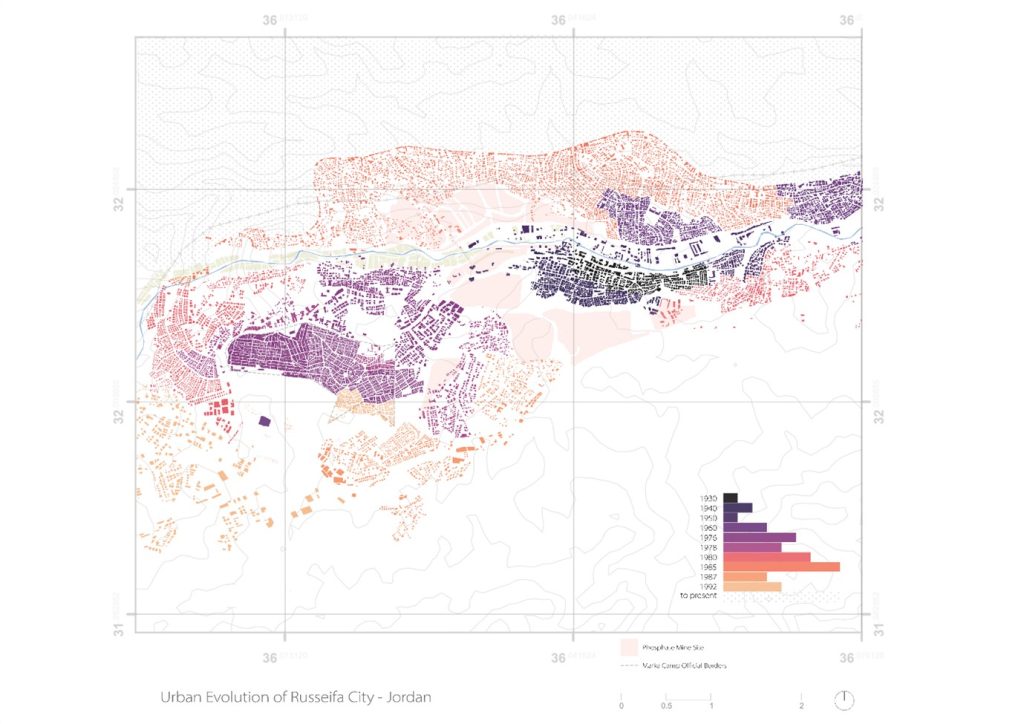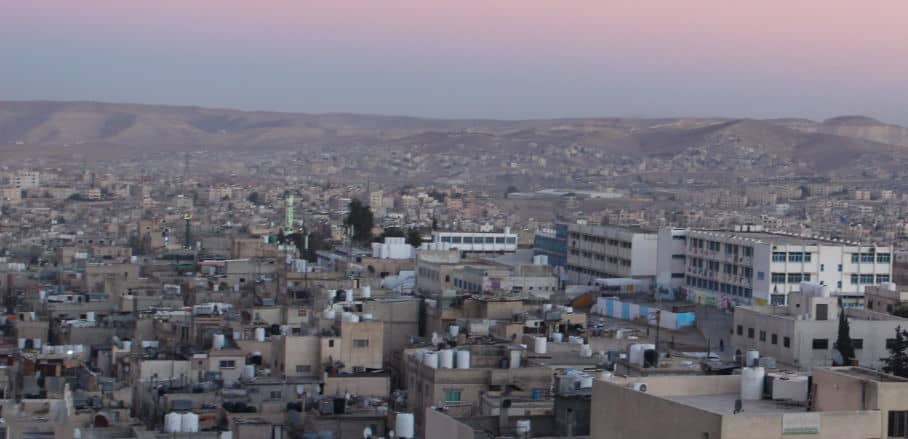From Burden to Economic Asset: Palestine Refugee Camps in Jordan
When faced with stereotypical images of refugee camps as isolated places without ways of contribution or interaction the example of Palestine refugee camp Marka proves these expectations wrong. Dina Dahood Dabash sheds light on the factors that contributed to the current agency of the Marka camp in Jordan and unfolds some risks that the camp’s residents and its hosting city may face.
Refugee camps are generally perceived as temporary spaces of exile and nondescript depoliticised places of exception. Refugee camps and refugees, in general, are even discussed as a burden on the economy of their hosting cities, draining their infrastructure with a marginal role in the city’s evolution, if any. However, in Jordan, Marka refugee camp has evolved into a spatial agent within its hosting city Russeifa, playing a role that exceeded the initial intention of its foundation.
The Beginnings of Palestine Refugee Camps in Jordan
The first Palestine refugee camps were established in the aftermath of the 1948 and 1967 Arab Israeli conflict in order to accommodate more than 750,000 Palestinians who fled or were expelled during the Palestinian exodus. Jordan received the largest number of Palestine refugees of all five fields of The United Nations Relief and Works Agency for Palestine Refugees in the Near East (UNRWA). Nearly 370,000 refugees were accommodated in ten internationally recognised camps, resembling 18 per cent of the total population. Nowadays, Jordan hosts more than 2,300,000 Palestine refugees – almost 40 per cent of all registered refugees within the UNRWA’s five fields.
Palestine refugees (except Ex-Gazans) were granted the Jordanian citizenship, while the majority of those residing in other host countries remain stateless. All of the Palestine refugees, including those who were granted the Jordanian citizenship, maintain their refugee status and, thus, their right of return. The Palestine refugee camps in Jordan are jointly managed by the Department of Palestinian Affairs (DPA) and the UNRWA. The land the official refugee camps are located on is either state land or rented out for ninety-nine years and refugees residing in those camps have the right of use only, not ownership. Yet, UNRWA continues to provide its main services, such as education, health, and relief to all registered Palestine refugees regardless of their place of residence.
Marka and Russeifa – a Camp and a City
Marka is the second largest camp in Jordan, and one of the six emergency camps erected in 1968. The camp is located in Russeifa, a city within the Zarqa Governorate in the central region of Jordan. Together with Amman, Zarqa and Russeifa compose a corridor that constitute the second largest metropolitan area in the Levant (after Damascus), nowadays hosting more than half of Jordan’s businesses. Since its early beginnings, the city has combined significant resources such as the Zarqa River, phosphate mines, the Hejaz railway as well as a diverse demographic, which rarely can be found elsewhere in Jordan.
Benefitting from a fortune of natural and geographical advantages combined with the concentration of qualified human capital (namely Palestine refugees), Russeifa became the favoured destination for factories and businesses during the late seventies and eighties, thanks to its low-cost labour and proximity to the capital Amman.
By the mid-1970s, unemployment in Jordan virtually disappeared and more than 25 per cent of the domestic labour force was working in the Gulf. This directly impacted the city of Russeifa, similar to other cities that hosted Palestine refugee camps. Many of the refugees as well as Jordanians who managed to accumulate some savings to build or buy a dwelling outside the camp did not go far away from the rooted social network established within the camp.

Urban Evolution of Russeifa City © Dina Dahood Dabash
With the Refugee Camp Established, the City Centre Shifted
Consequently, Marka has turned into a centre of gravity where major events are happening and economic growth as well as housing development can be observed. Additionally, the economic porosity of the camp, which can be compared to a free economic zone area, combined with the full citizenship of Palestine refugees, has contributed significantly to turning the camp into an anchor within the spatial fabric of the city.
Furthermore, it is noteworthy to mention that the governance modality that has been adopted by the DPA increased the fluidity of relations between the camp and its surroundings. The porous borders along with the free mobility inside and outside the camp have added to the camp’s vibrance and catalysed further development of the area. It is needless to highlight UNRWA’s services that are accessible to all registered refugees, including the ones residing outside the camp, have created a significant catchment area and widened the camp’s spatial orbit.
Refugee Camps as Vital Part of a City’s Metabolism
Forced migration and refugee camps recently have been receiving scholarly and intellectual attention. In many cases the camp is still capsulated within Agamben’s state of exception, meaning that the camp’s exceptional situation, which was meant to be provisional in the first place, became a normal paradigm of government over the years. There is a clear separation line between the camp and its hosting setting, overlooking the reciprocal impact between the camp and the city. Despite the fact the camp space has been initially designed and officially ‘documented’ by the humanitarian bodies as a temporary space to provide dignified basic needs, the role of the Palestine refugee camp space has evolved into a significant player within the spatial metabolism of the city during the past fifty years.
In the case of Palestine refugee camps in Jordan, various factors, such as citizenship, location, humanitarian infrastructure, and governance modality have all contributed to turning the humanitarian space of the camp into an impactful element of the city. The case of Marka exemplifies multiple opportunities and lessons to take into account while conceptualising future refugee camps, more specifically in geopolitically challenged countries like Jordan.
- From Burden to Economic Asset: Palestine Refugee Camps in Jordan - 20. October 2022
